Most addicts and alcoholics find themselves with a lot of time on their hands when being in the early stages of recovery. No more hours spent organizing the drinking / drugging or recovering from it. Of course, those who engage in therapy and / or twelve steps programs use these extra hours for appointments or meetings, fellowship coffees and gatherings, a wonderful way to connect with recovery vibes. Still, many need alternative activities to stay connected with this new way of life. Creativity is one of the pathways that can lead to fulfillment and contentment; As Albert Einstein quoted “Creativity is the intelligence having fun”. We utilize this intelligence, and we catch ourselves realizing that we just found an answer to a nearly impossible problem. Or we engage in creating, making, producing maybe not a masterpiece, but something which can reflect our inner self.
Recovering addicts and alcoholics can also explore creativity through art-making, or expressive art therapy. Research shows that our two brain hemispheres speak a different language: the left hemisphere is devoted to rational thinking, analysis… as the right brain hemisphere speaks a language of symbols, images, emotions. Creativity will allow us to reassemble them:
Diana Fosha (The healing power of emotions – 2003) states that “Emotional experience” is not processed through language and logic (left hemisphere), because the right hemisphere speaks another language, a language of images, sensations, and impressions, so therapy must also be conducted in a language that the right hemisphere speaks!
Once Art Therapy helps to get in touch with the original states, cognitive restructuring can take place, and new messages begin to replace the old ones. The formation of images activates sensory pathways, and helps to create neuronal pathways, which then provide shortcut to the ability to stop cravings, to regulate emotions and to control impulsivity: Neurons that fire together wire together.
We should not underestimate the power of what appears at first sight to be a “kid activity.” This is another good reason to engage in creative art, to reconnect with the child within. The inner child, or the true self (versus the false-self) that we each have in us – the part of us that is ultimately alive, energetic, creative and fulfilled. Our inner child is spontaneous, expansive, loving, giving and accepts ourselves and others. It feels whether the feelings may be joyful or painful. And it expresses these feelings.
Our true self accepts our feelings without judgement and fear and allows them to exist as a valid way of assessing and appreciating life’s events. (C.L. Whitfield – Healing the child within – 1989).
So letting this child-within expresses its emotions through art-making, or any other activity that unlocks creativity (cooking, gardening, decorating,…) may allow the addict / alcoholic in recovery to connect those dots, the ones who will reconcile the inner-child with the growing recovered adult, to translate the language of the brain, that weights, analyses and judges, with the language of the soul, which processes and regulates emotional life.
Like this creative child, we do not judge what we create, we are just happy with the fun and the relief experienced in the process. In Crossroads, we value Expressive Art and encourage clients to keep an open mind and explore the magic of creativity.

